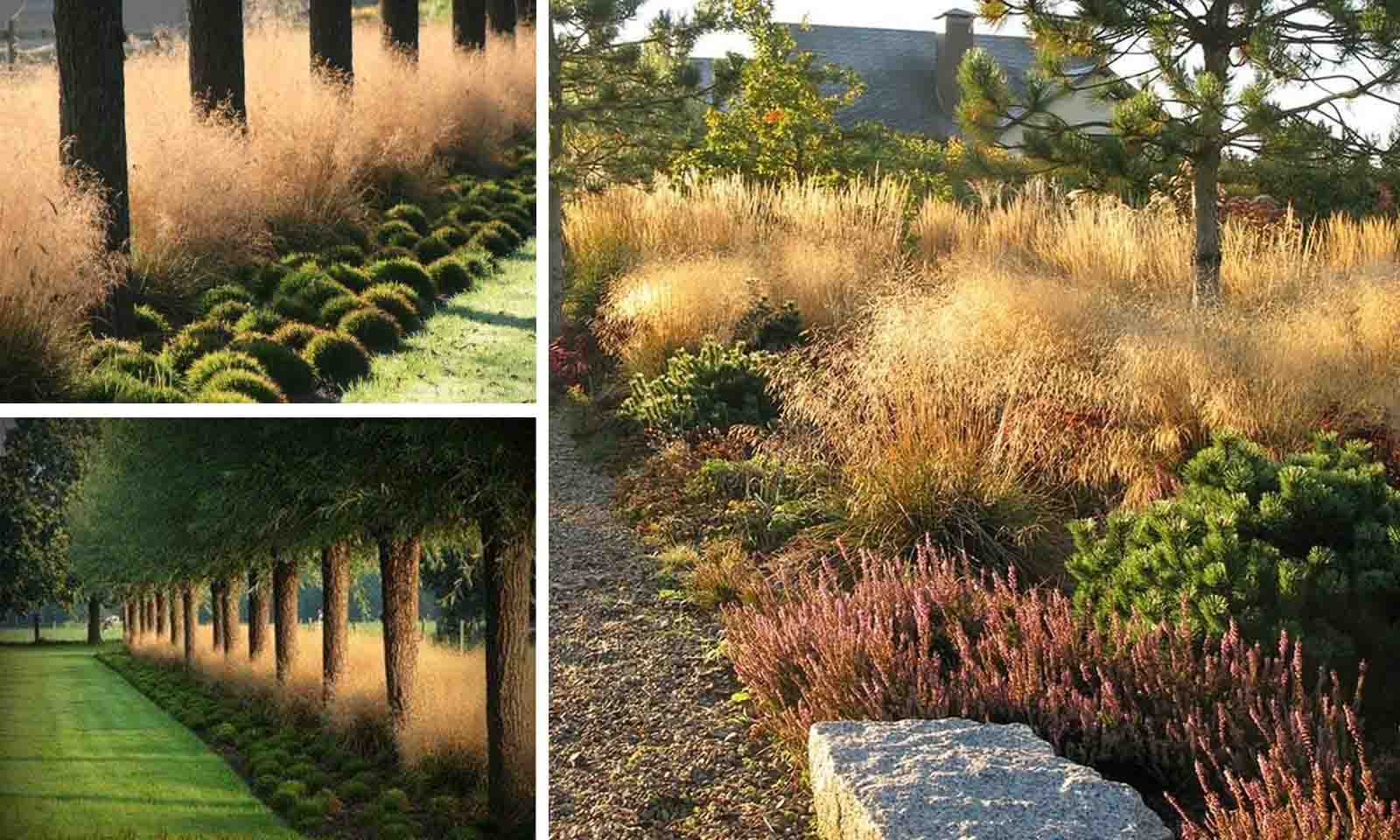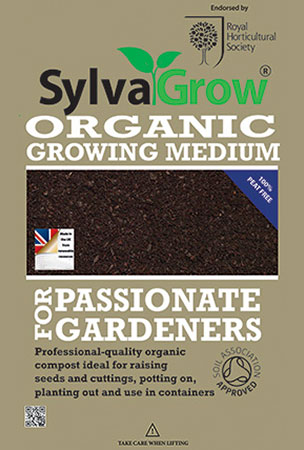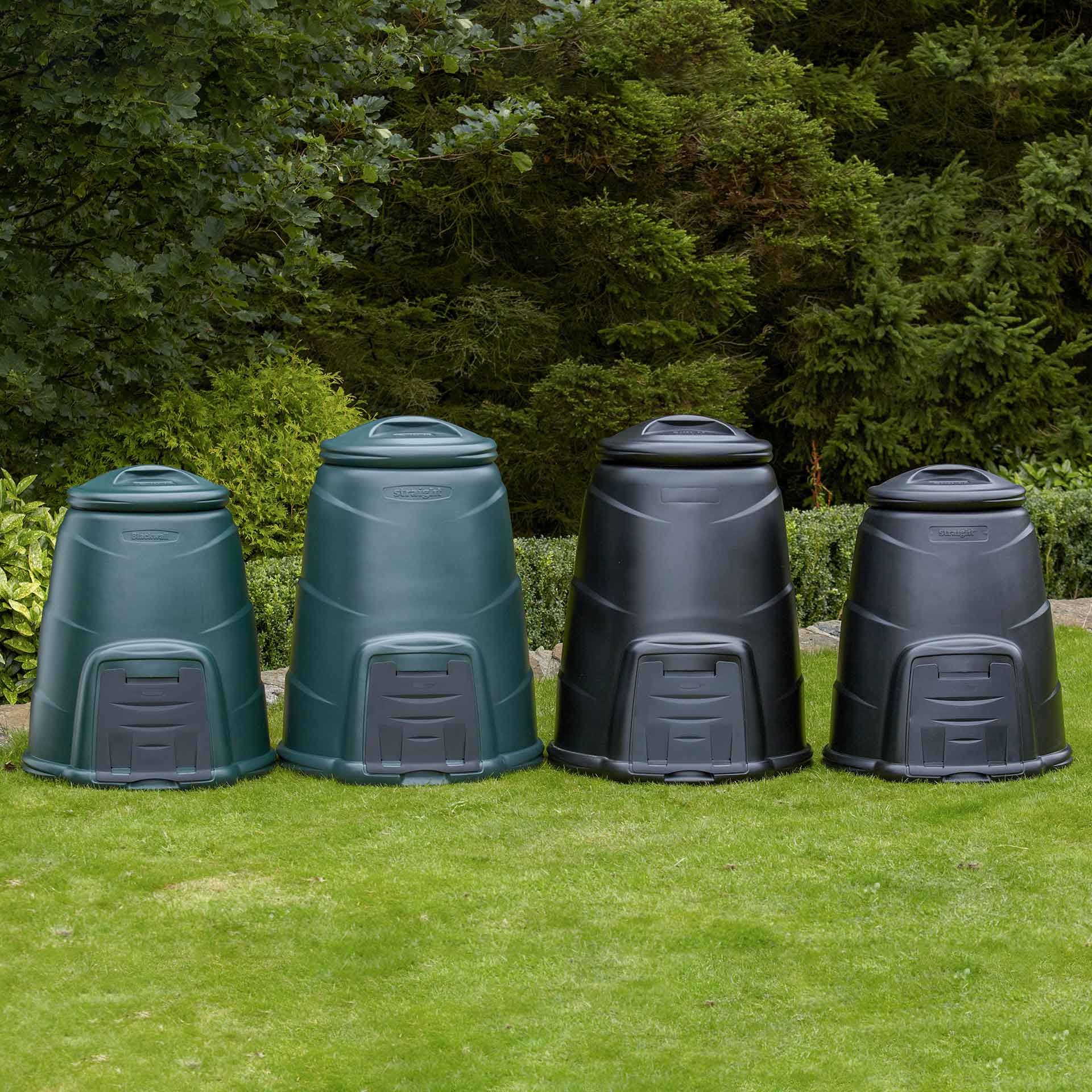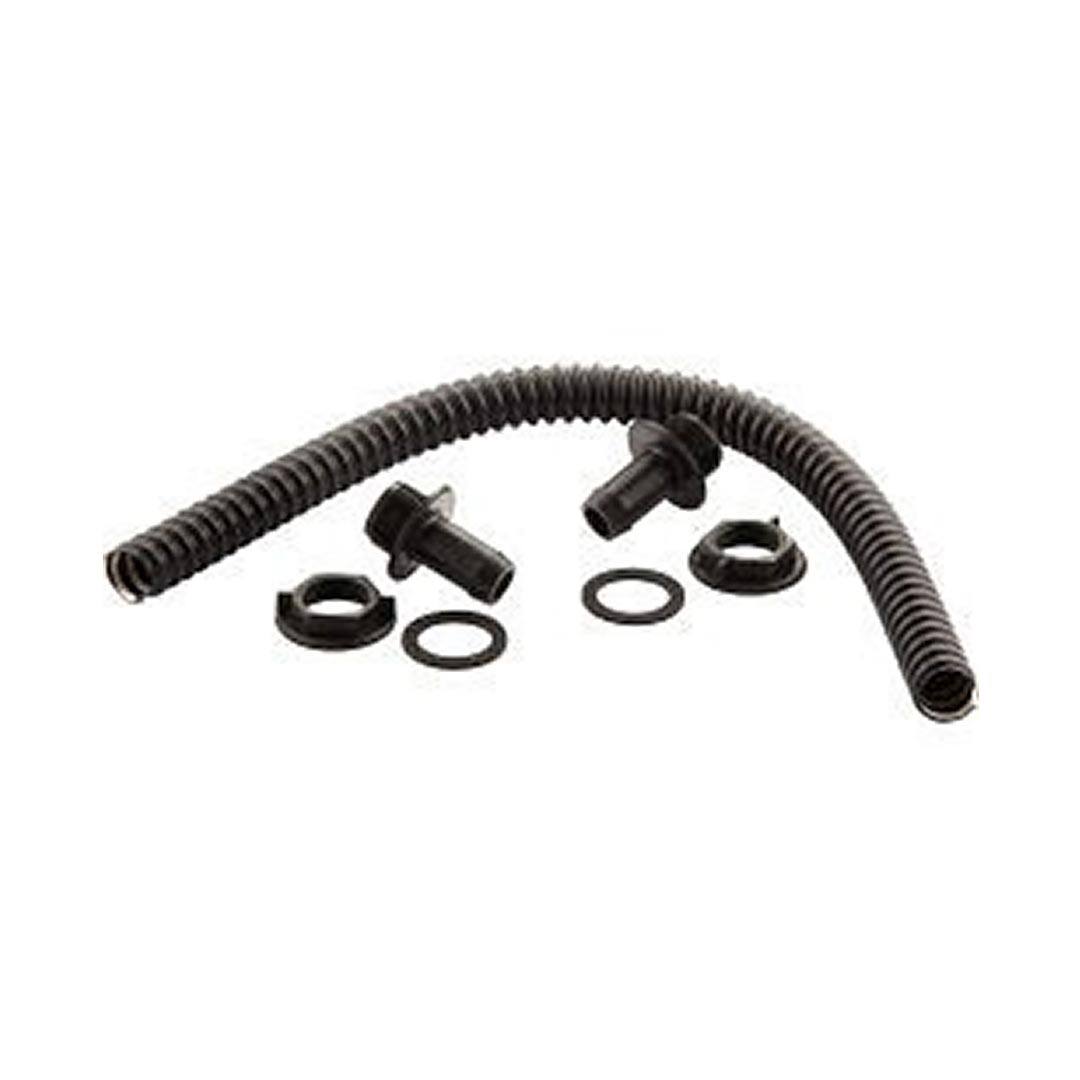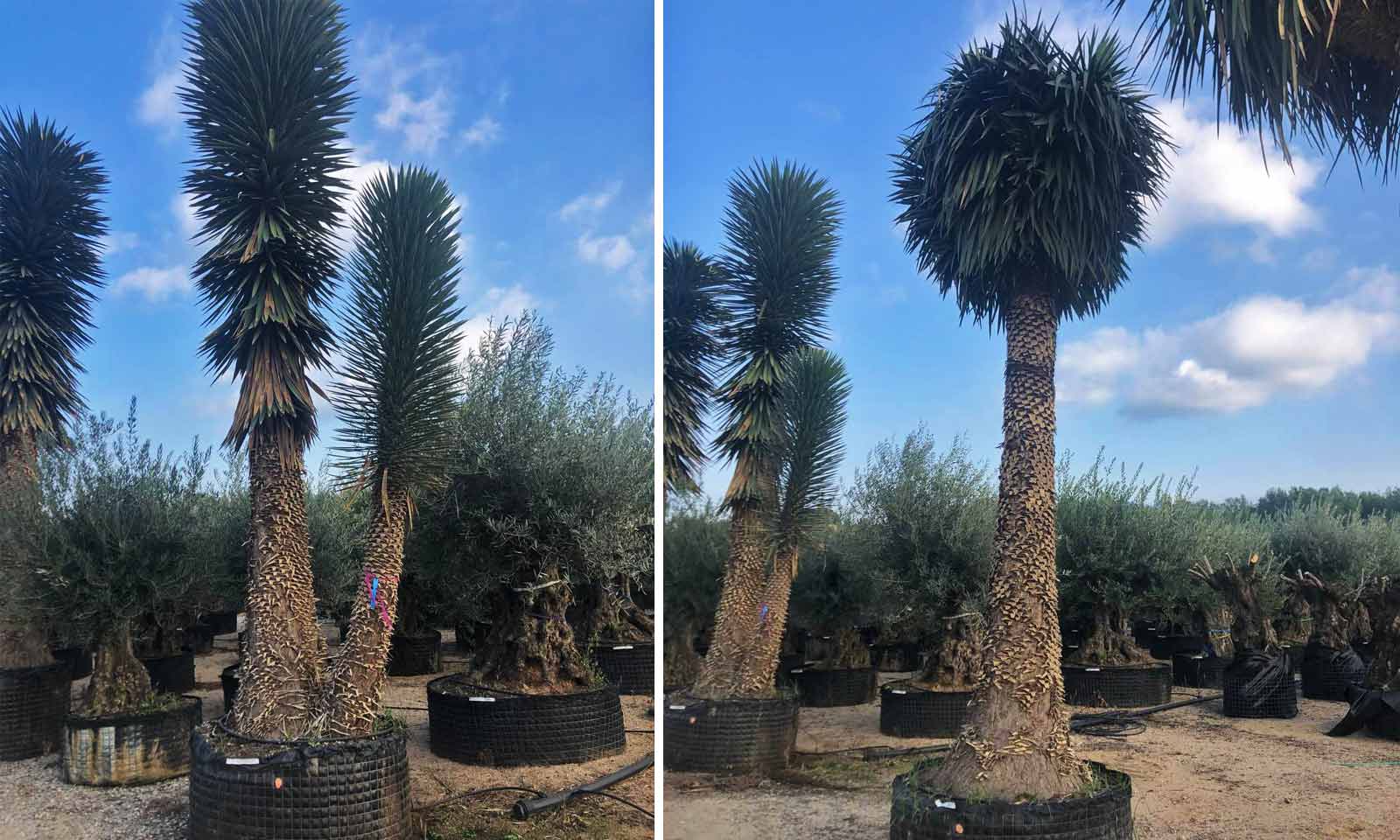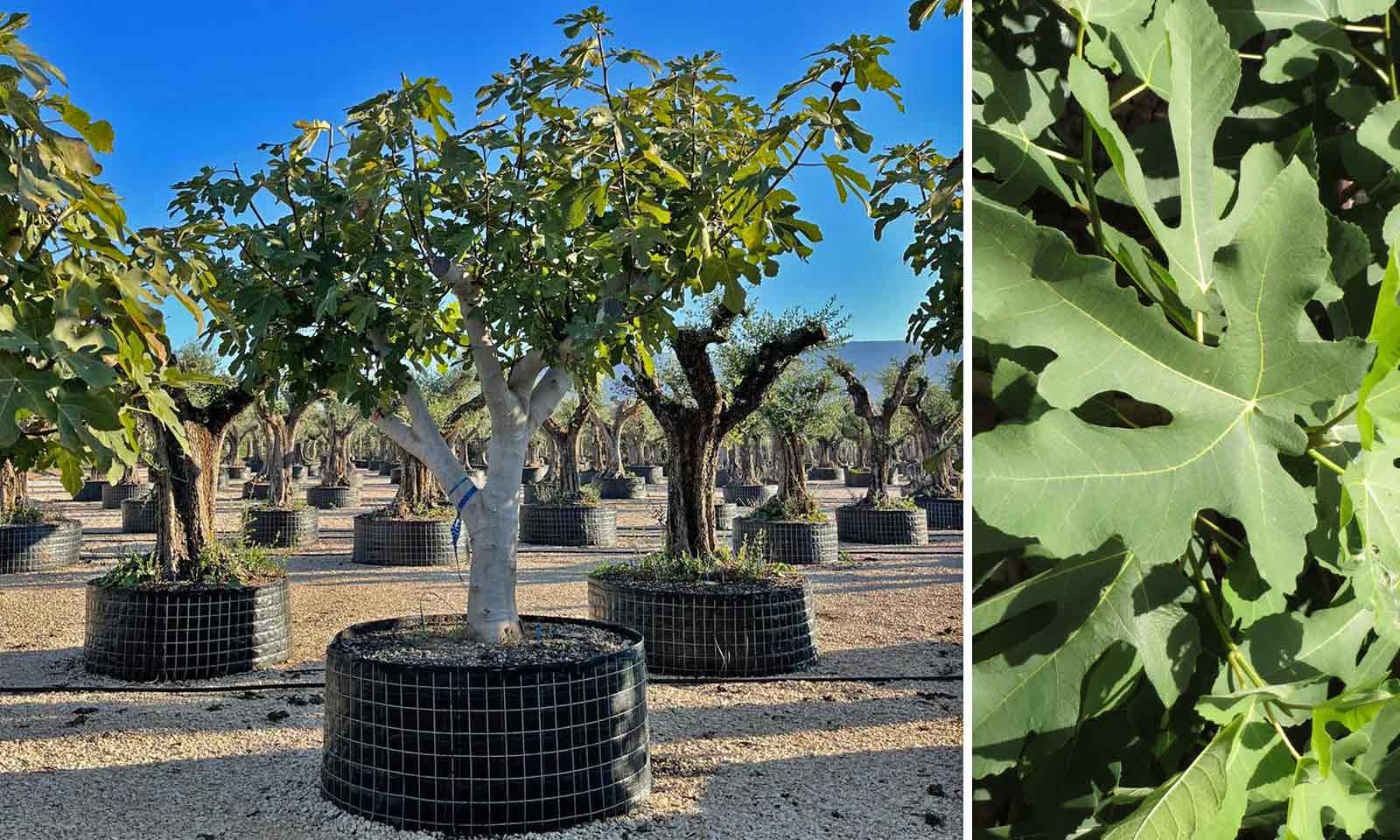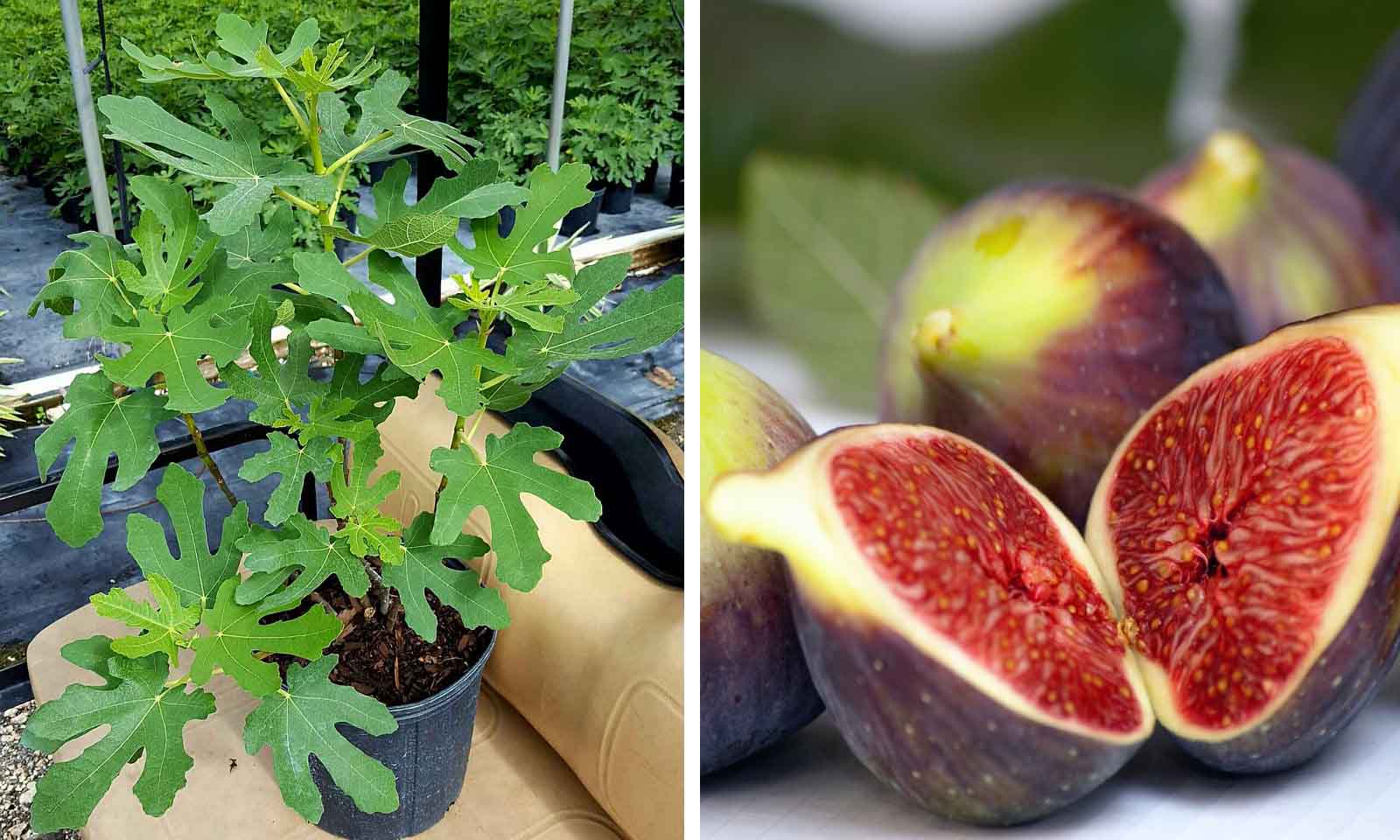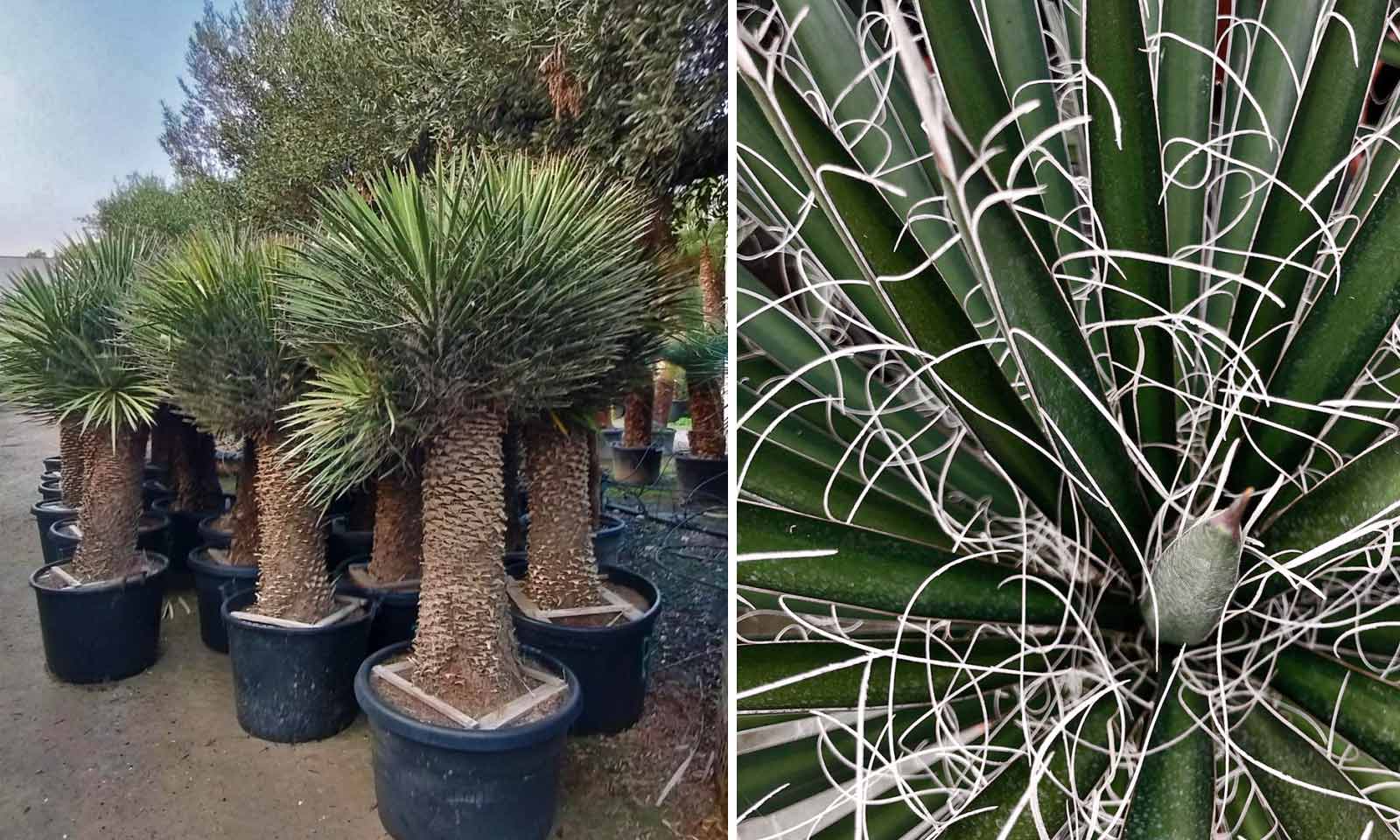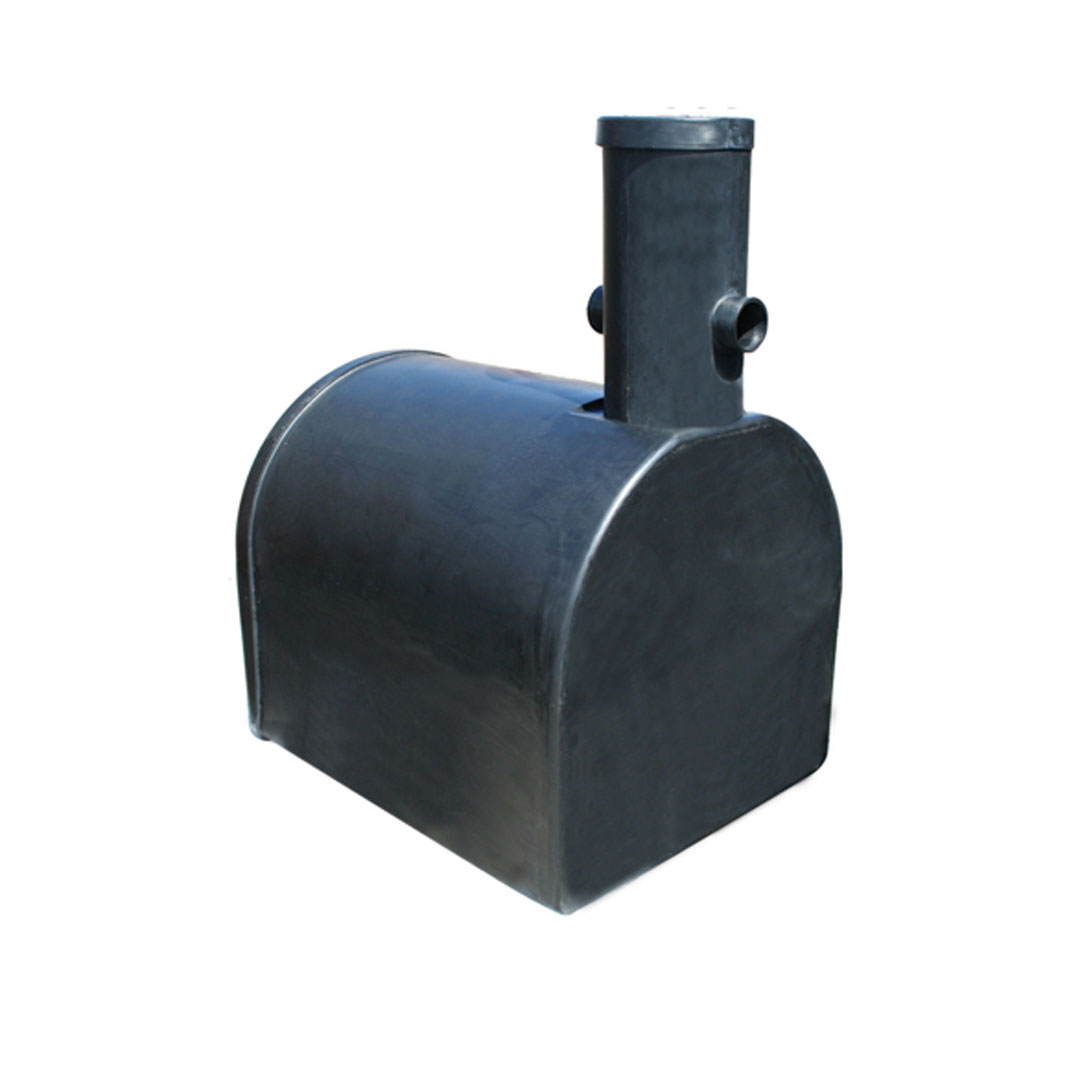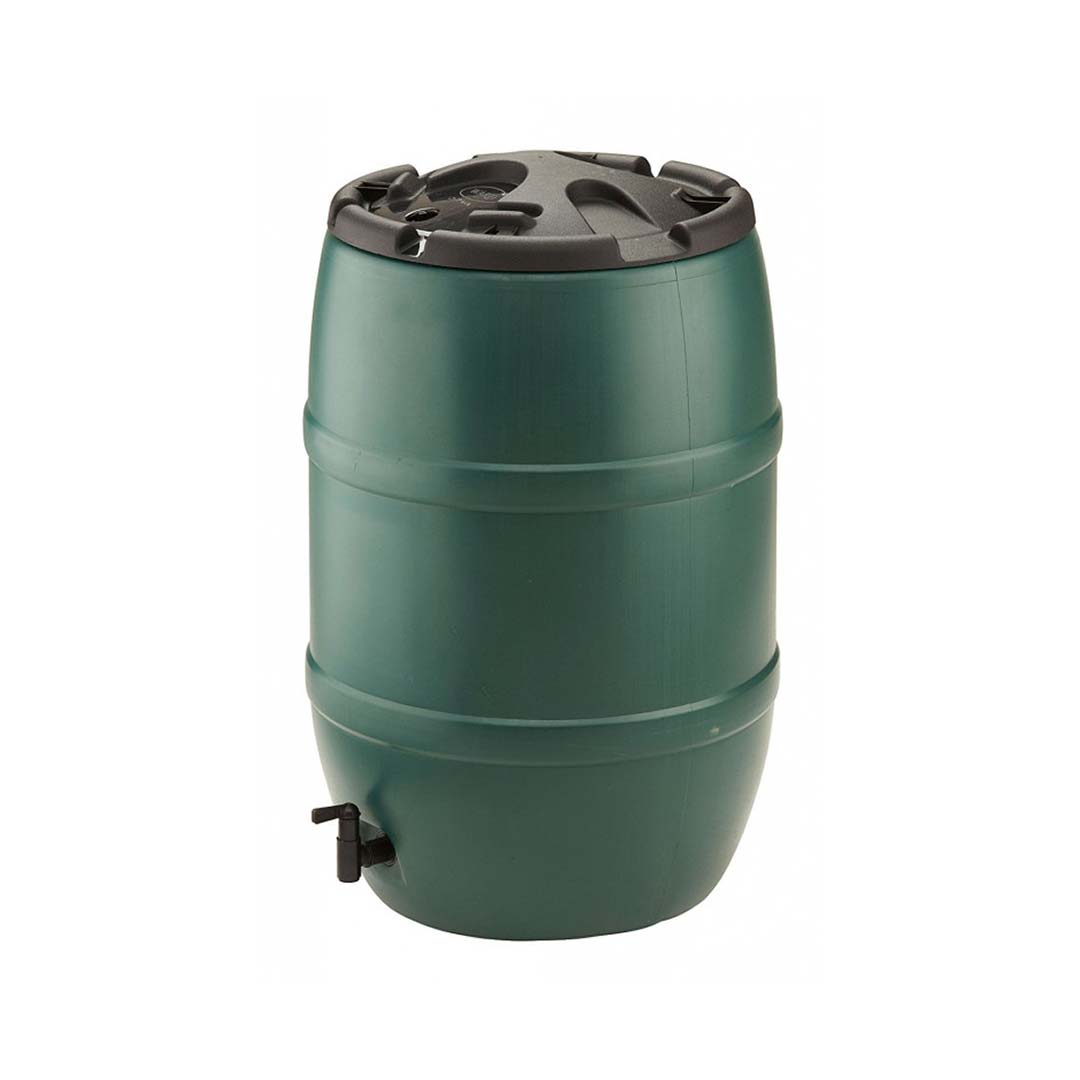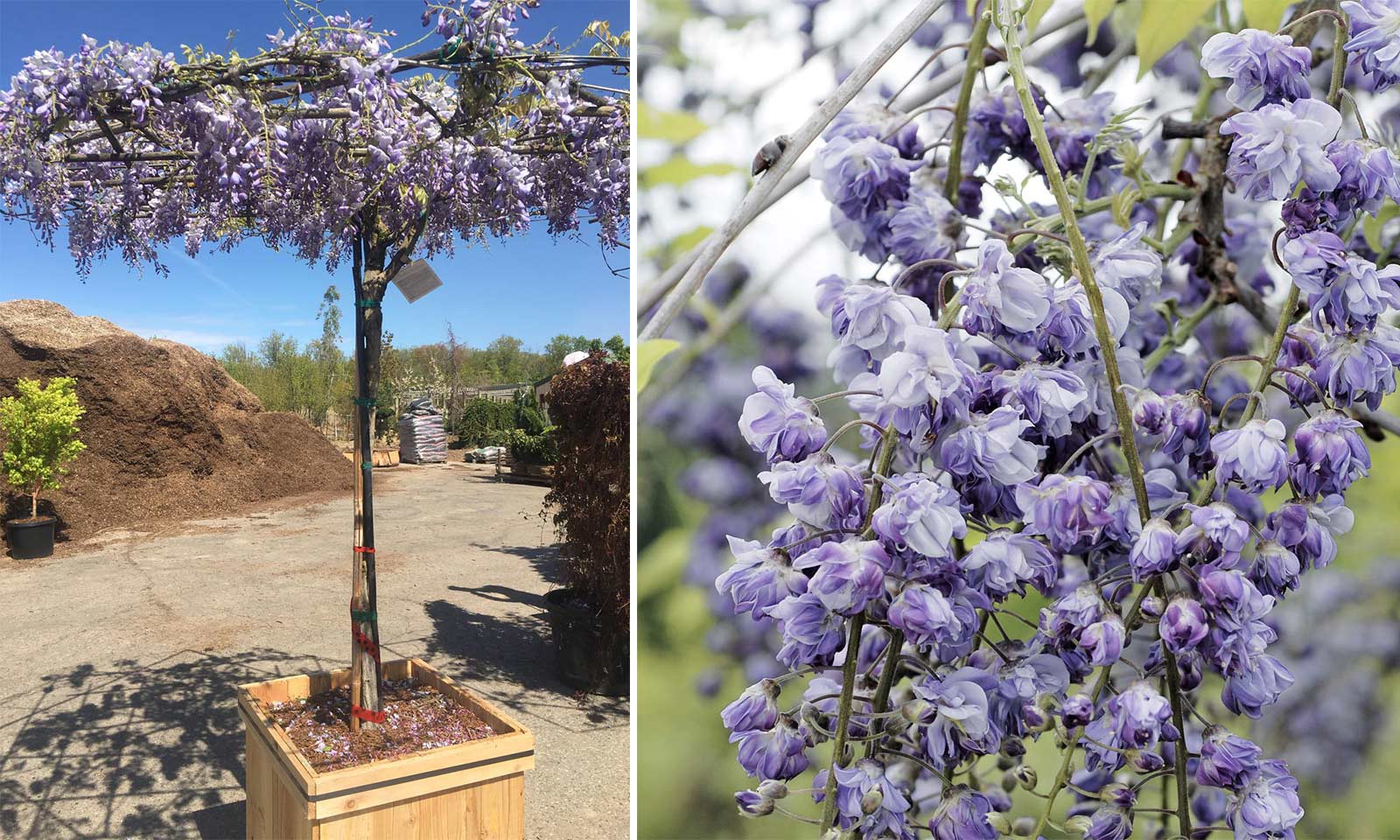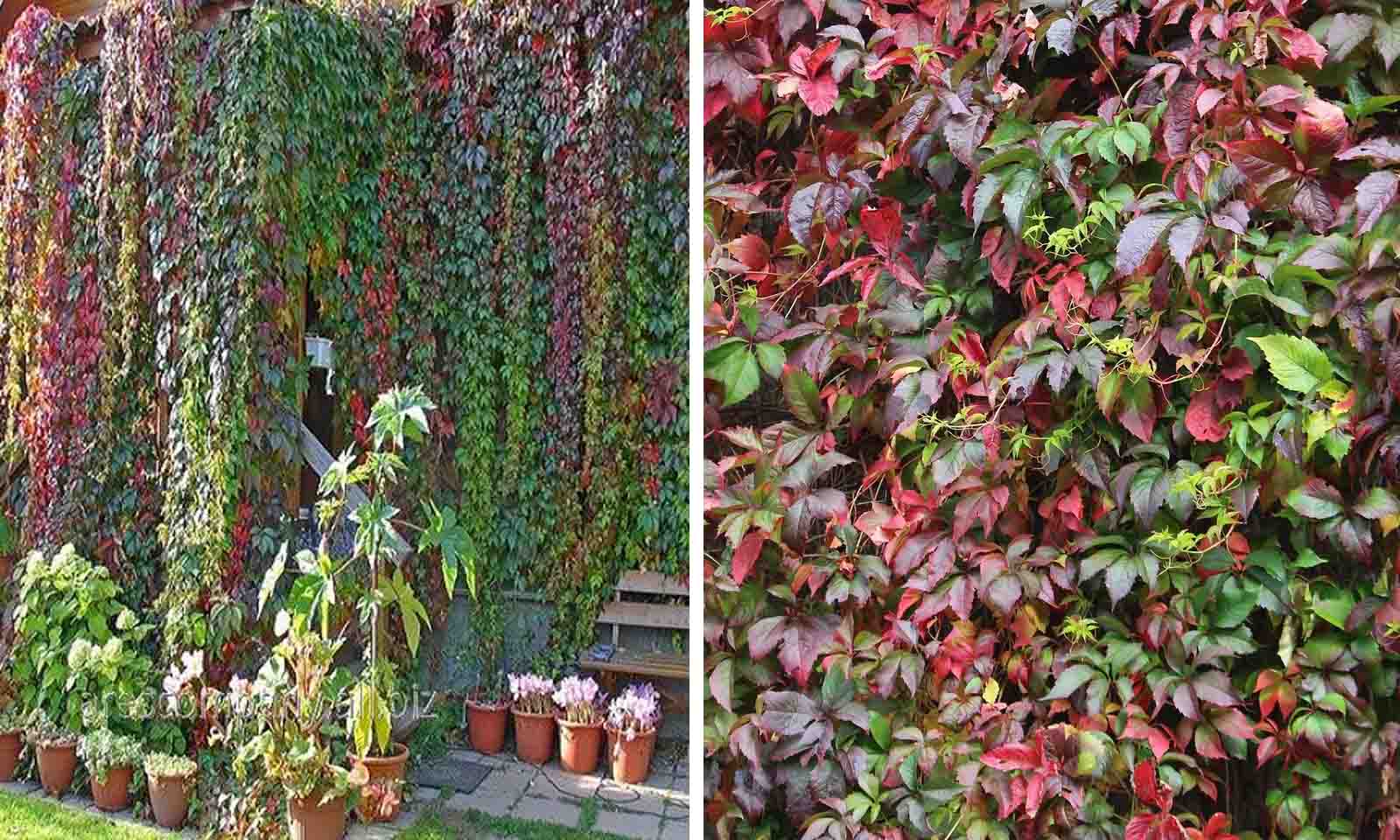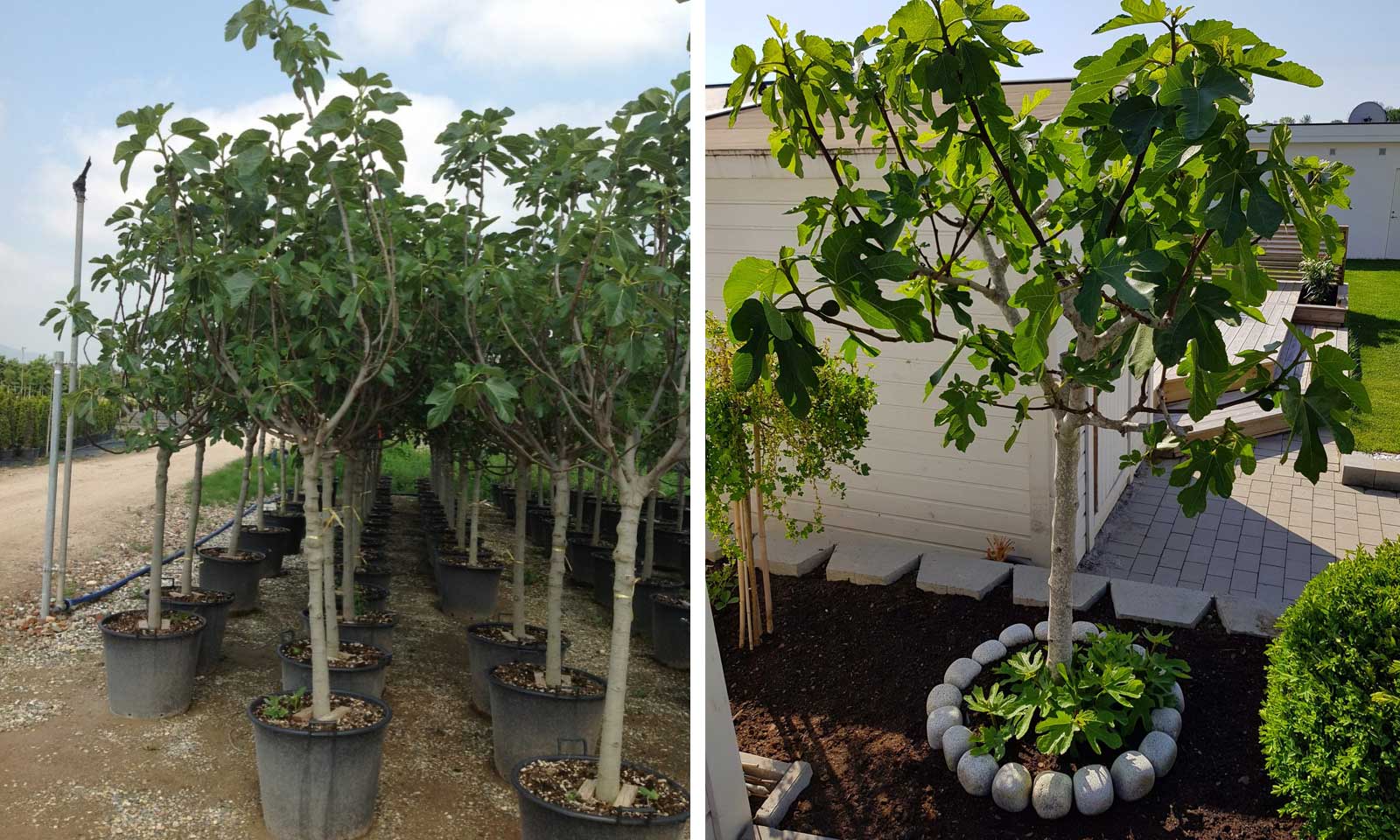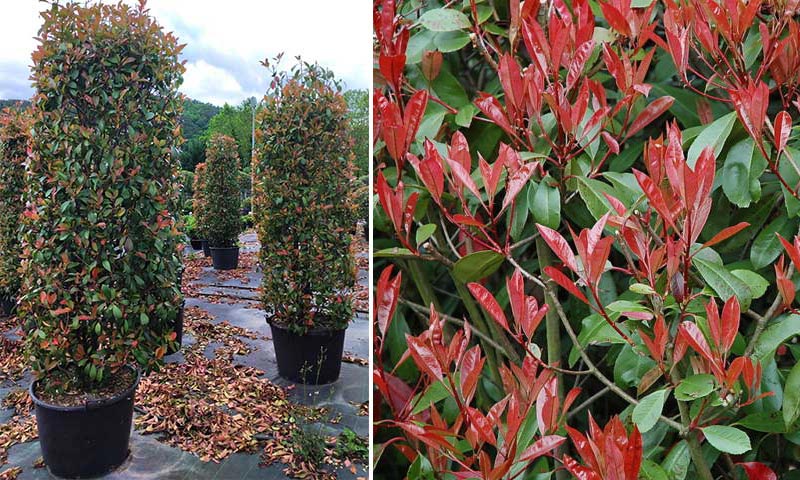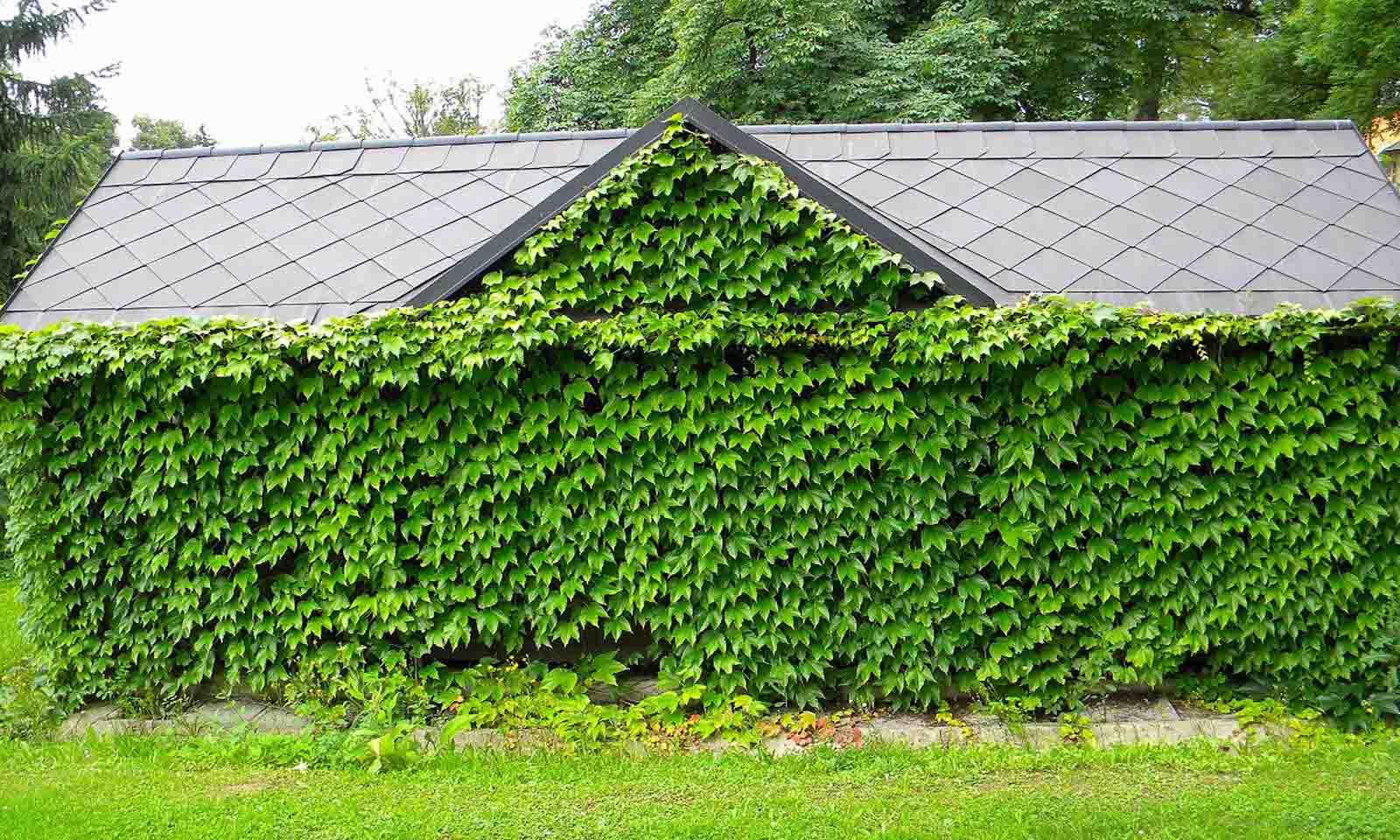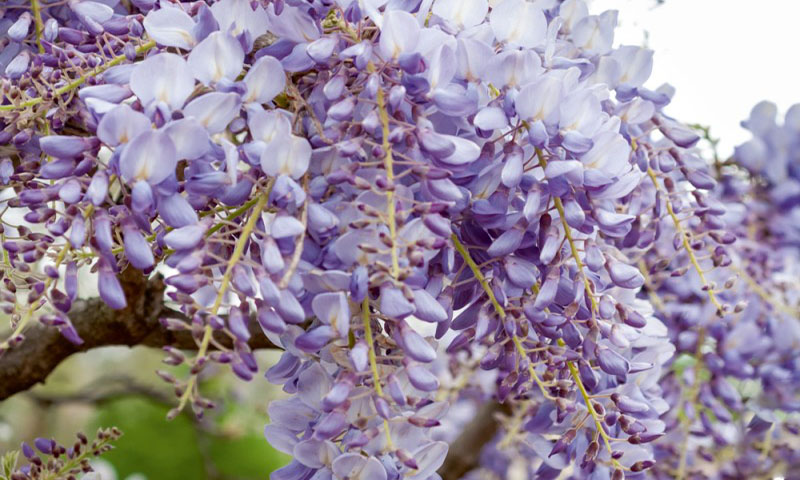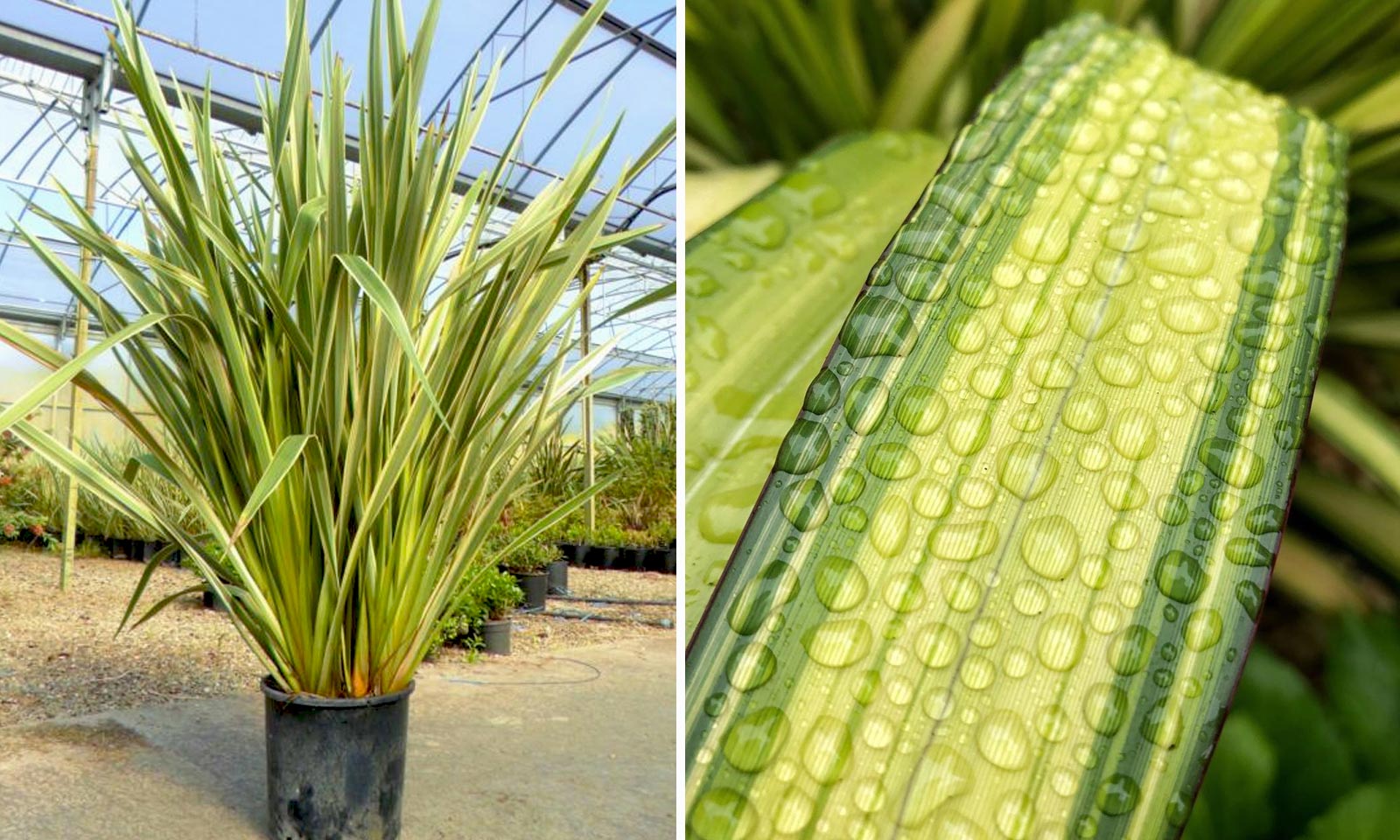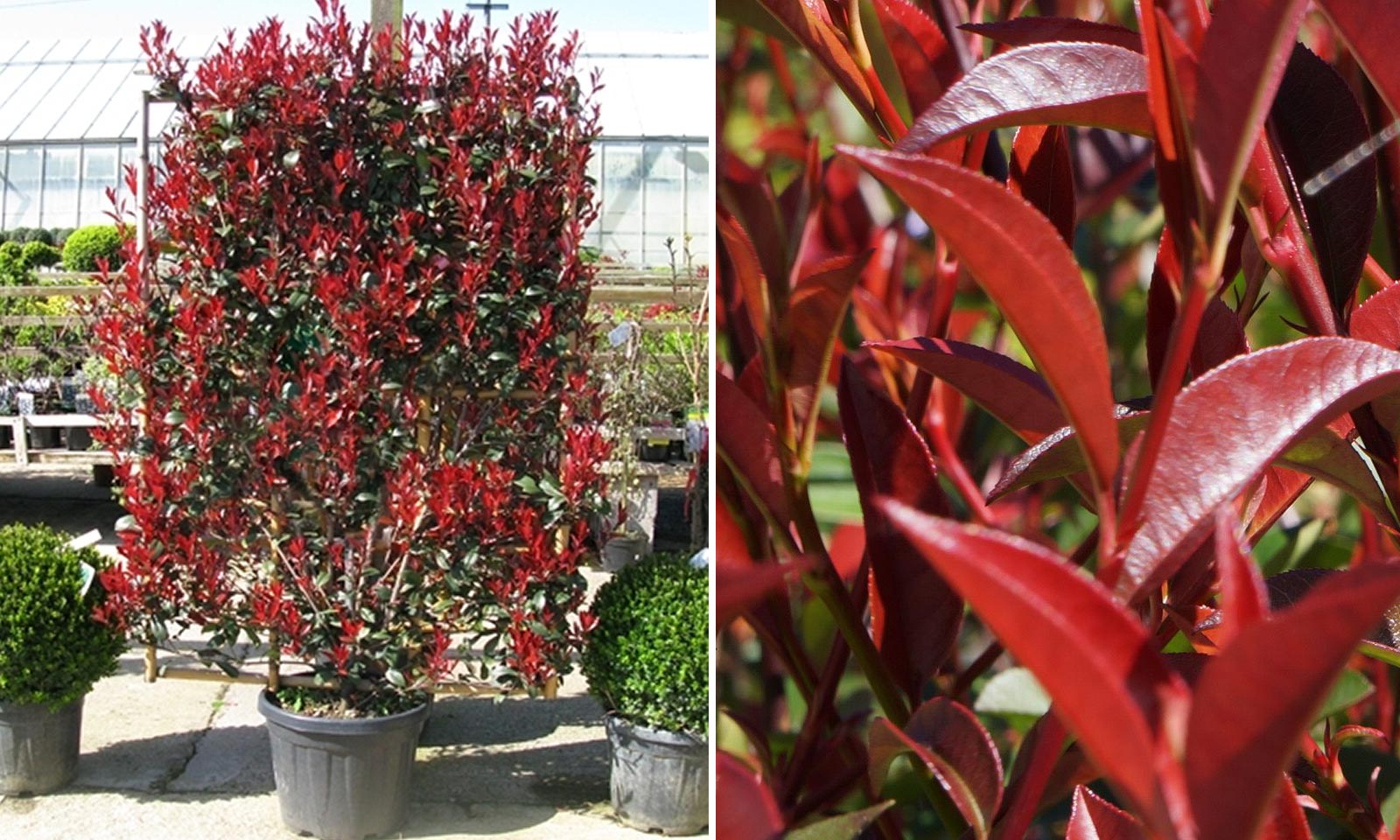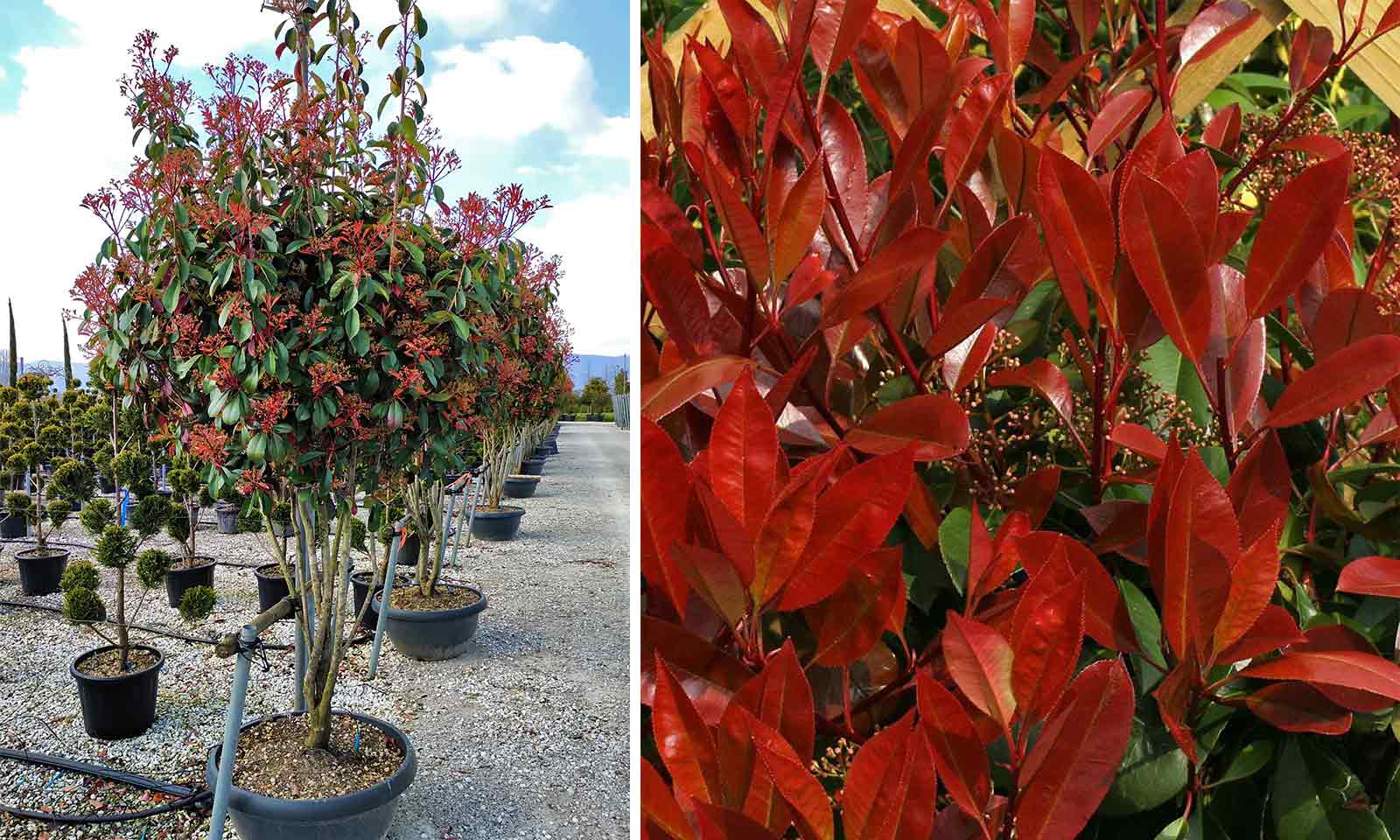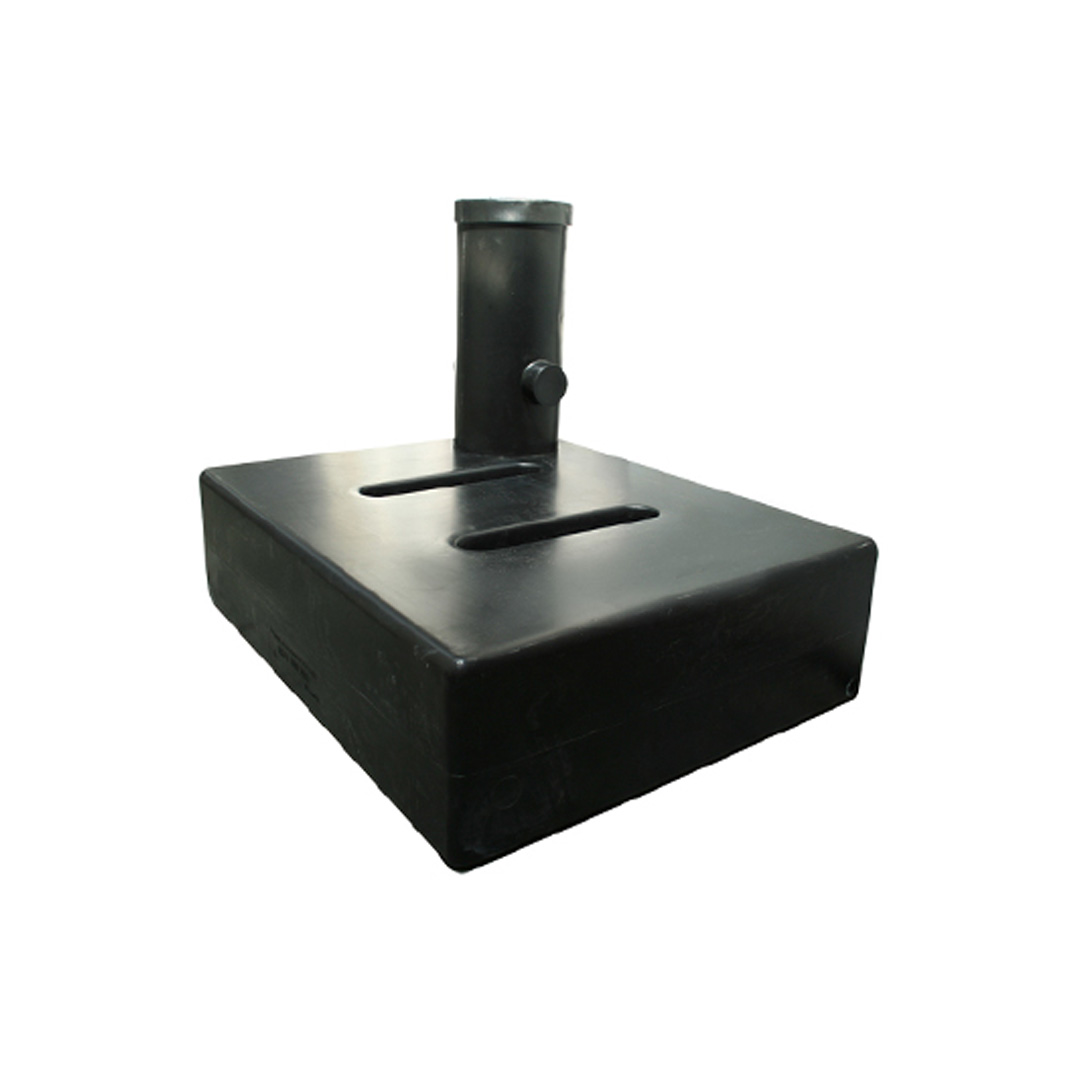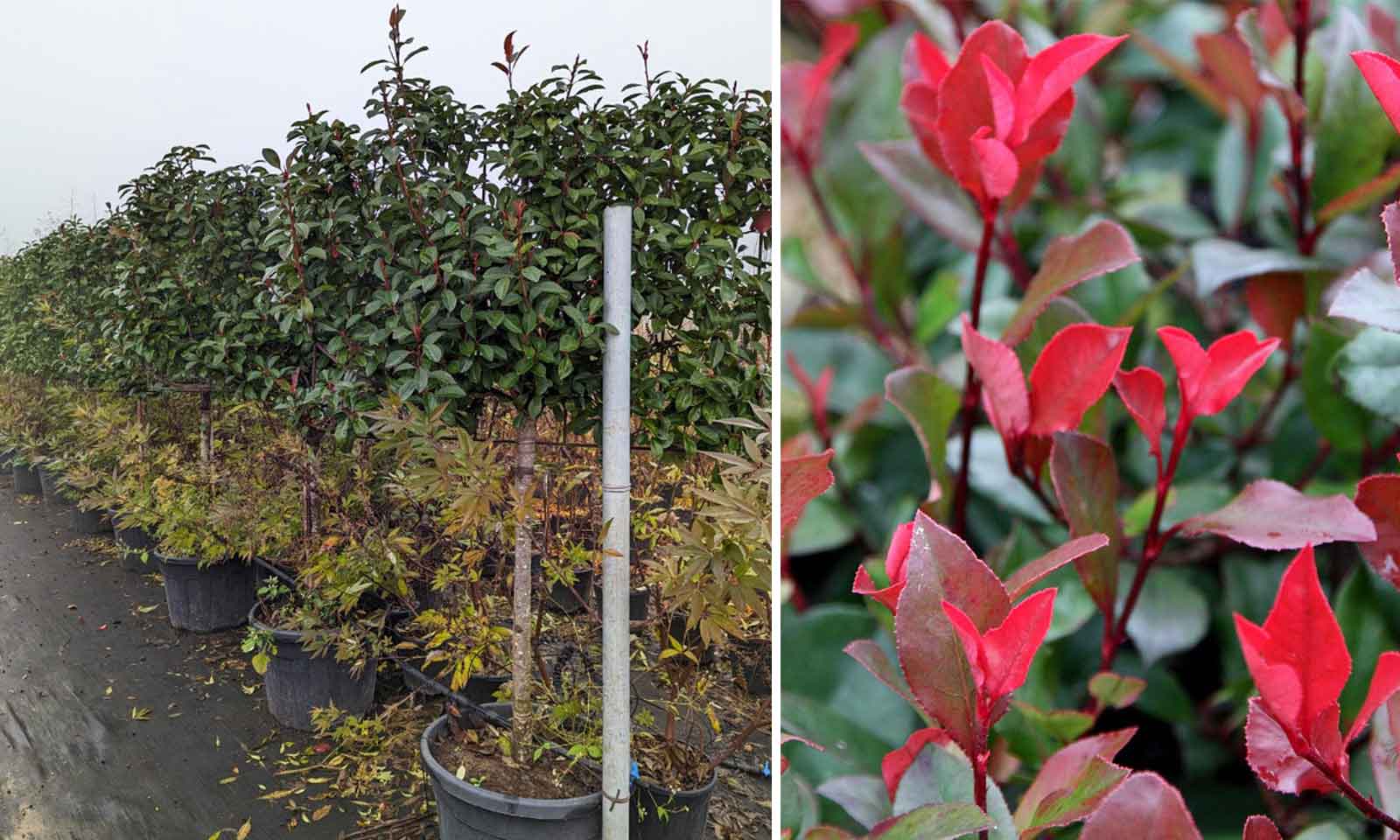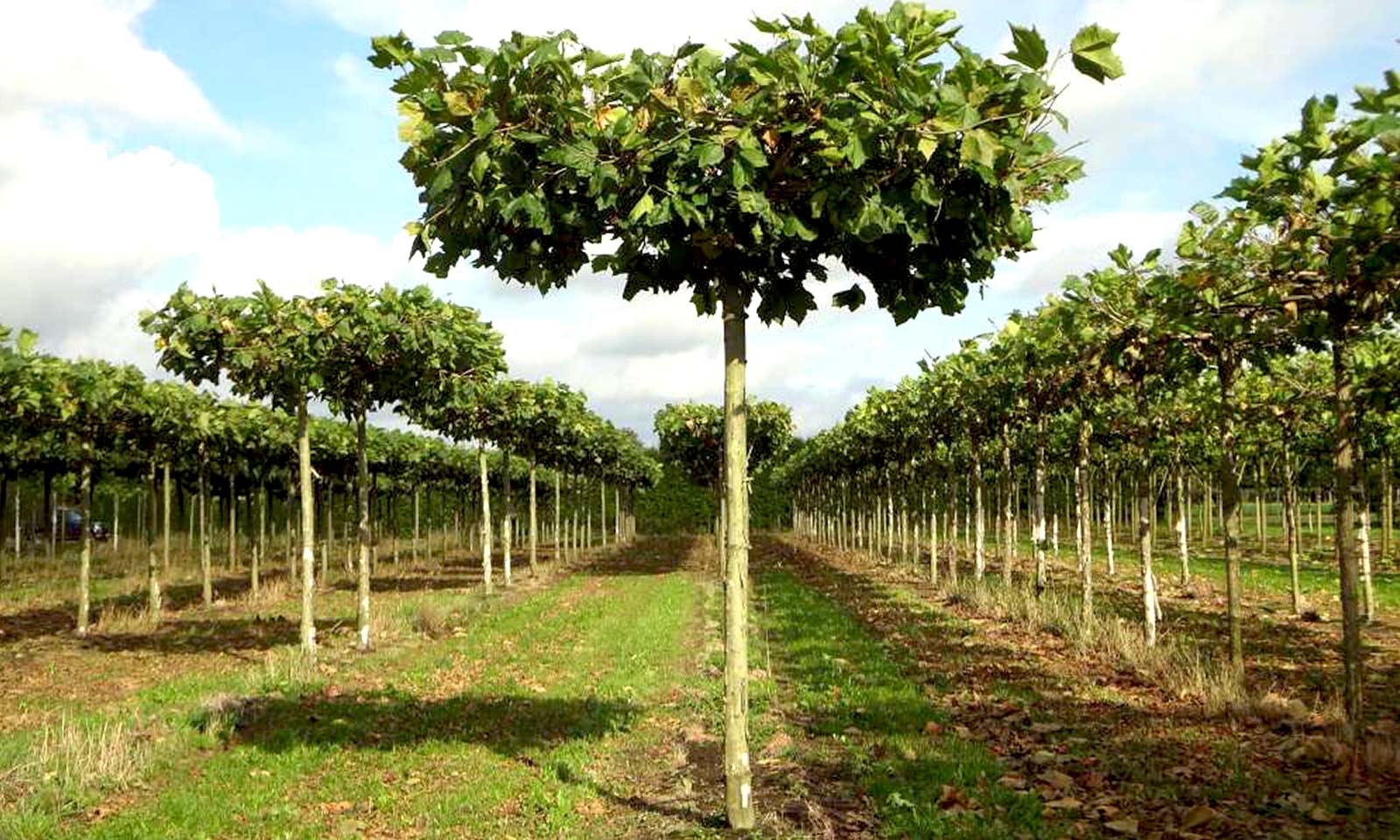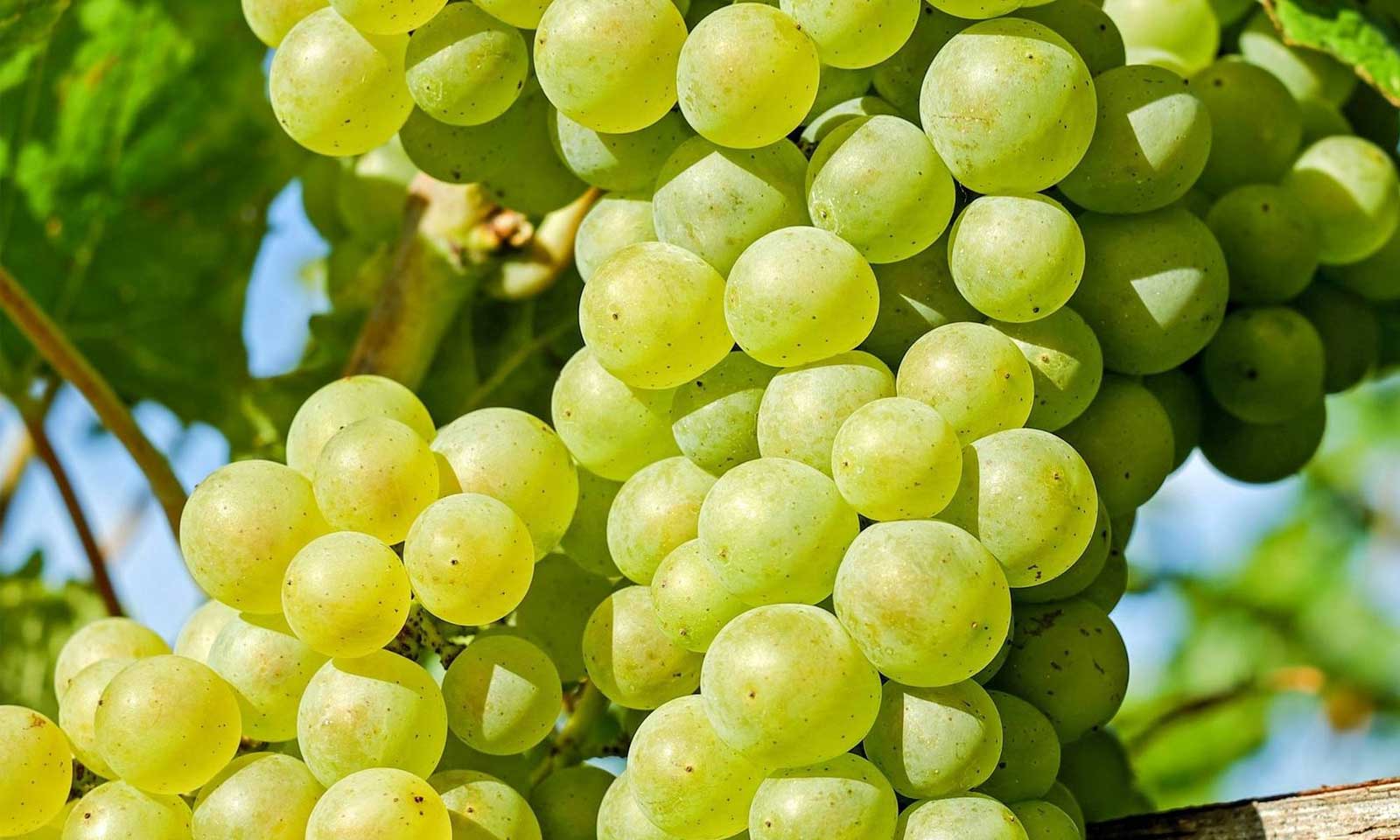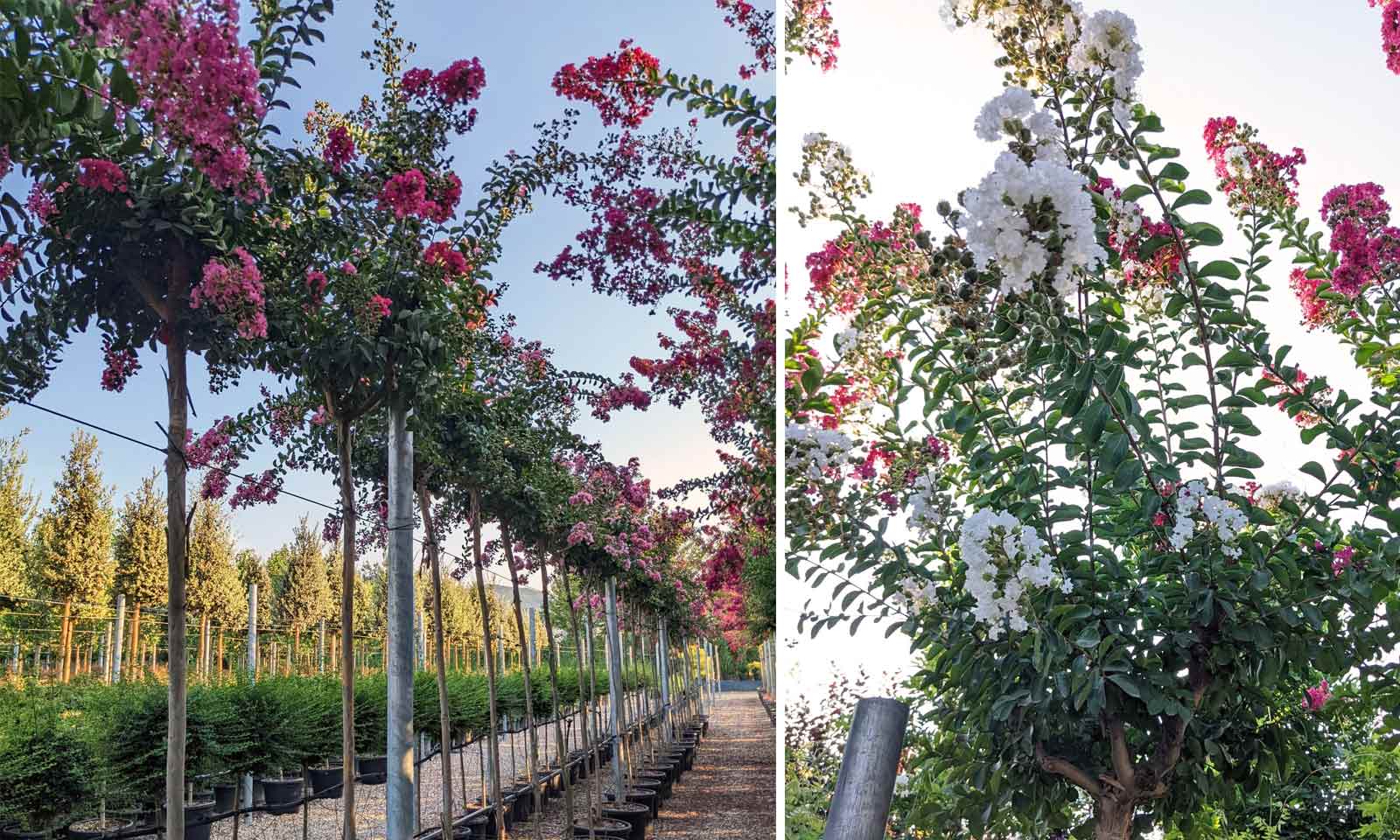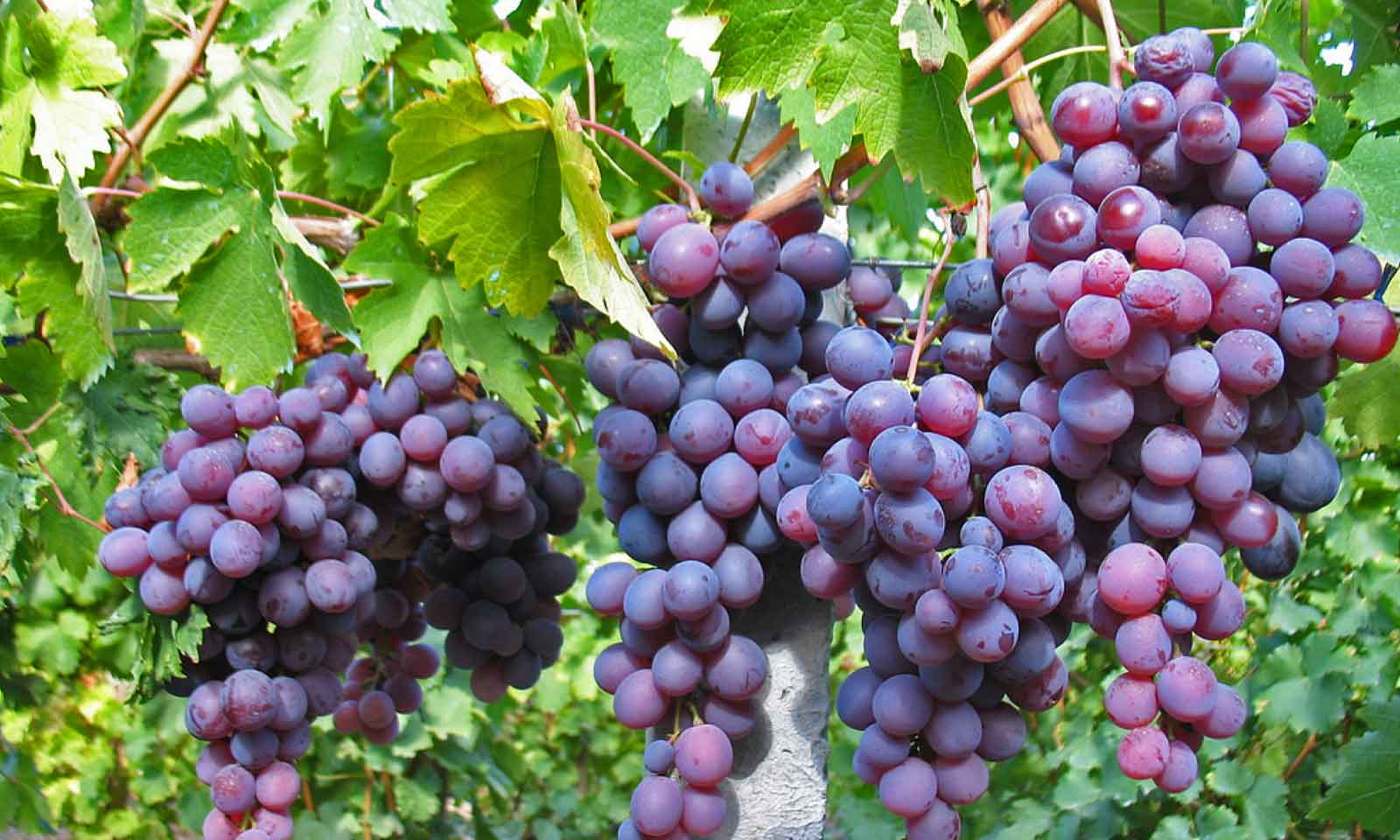Ficus Carica (Edible Common Fig Tree) - Half Standard
The Fig Tree (Ficus Carica) is an eye-catching Mediterranean plant that makes a brilliant centrepiece for any garden, with its smooth grey-barked trunk and lush foliage. Its attractive large leaves have 3-5 lobes and are known for their pleasant fragrance. The fig tree is a deciduous tree which originates in the Middle East and is native to Syria and Persia where it grows among rocks and scrub on hot dry soils. However fig trees have been cultivated in the UK for over 2000 years since Roman times and the fig tree is well adapted to our climate to the extent that it can self-propagate in the mild SW regions. Ficus carica is resistant to frost and will re-grow from root level in spring if hard frost damage cause it to die back. The fig tree grows best in an area that is sheltered but receives plenty of sun, which is why many gardeners successfully plant figs near or next to a South-facing wall in the UK. Fig trees need well-drained soil and won’t do well in shade. Most fig trees benefit from starting off in pots before being introduced to garden beds when they are strong enough and are starting to outgrow their constricted environment. When potted it is essential to water your plant regularly but avoid over-watering. Once mature the fig tree will thrive in moist or dry soil and can tolerate drought. The fig tree usually bears fruits from early summer to September producing abundant dark violet, green or black figs in hot summers. Ficus Carica is ideal for container cultivation as it needs to have its roots restricted for optimum fruit crop; otherwise it will bear more leaves than fruit. It is rather hardy to the UK climate, standing at H4 on the scale. However it would be best to shelter this plant during extreme cold temperatures, particularly in Scotland. The plant itself is generally pest and disease free. Follow the guidelines for when to prune this plant.
Product Dimensions
10 litre pot: trunk 80 - 120 cm (2.6-3.9 ft), canopy app. 30 - 50 cm (1-1.6 ft)
15 litre pot: trunk 80 - 120 cm (2.6-3.9 ft), canopy app. 30 - 50 cm (1-1.6 ft)
18 litre pot: trunk 80 - 120 cm (2.6-3.9 ft), canopy app. 30 - 60 cm (1-1.9 ft)
25 litre pot: trunk 80 - 120 cm (2.6-3.9 ft), canopy app. 40 - 60 cm (1.3-1.9 ft)
35 litre pot: trunk 80 - 120 cm (2.6-3.9 ft), canopy app. 40 - 60 cm (1.3-1.9 ft)
50 litre pot: trunk 80 - 120 cm (2.6-3.9 ft), canopy app. 50 - 80 cm (1.6-2.6 ft)
70-90 litre pot: trunk 80 - 120 cm (2.6-3.9 ft), canopy app. 60 - 100 cm (1.9-3.2 ft)
110-130 litre pot: trunk 80 - 120 cm (2.6-3.9 ft), canopy app. 80 - 120 cm (2.6-3.9 ft)
150-180 litre pot: trunk 80 - 120 cm (2.6-3.9 ft), canopy app. 100 - 150 cm (3.2-4.9 ft)
200-250 litre pot: trunk 80 - 120 cm (2.6-3.9 ft), canopy app. 120 - 180 cm (3.9-5.9 ft)
Latin Names: Ficus Carica Brown Turkey
English Names: Edible Common Fig Tree
Species: Moraceae
Genus: Ficus
Foliage Type: Deciduous
Foliage: Green
Suggested Location: Outdoors
Suggested Soil Type: Well-drained, Moist but well-drained. Sand, Chalk, Loam
Suggested Exposure to Sunlight: Full Sunlight
Suggested Exposure to Weather: Sheltered or Exposed.
Hardiness Rating: Medium (H4)
Growth Habit: Bushy
Cultivation: Best grown fan-trained against a warm wall or fence, using a root restriction method such as a box of paving slabs with the bottom filled with a warm layer of rubble or broken crocks. Also suitable for cultivation in a container
Propagation: Propagate by hardwood cuttings
Suggested planting locations and garden types: Wall-side Borders Architectural City & Courtyard Gardens Cottage & Informal Garden Mediterranean Climate Plants
Lowest Temperature Tolerance: -10 °C to -5 °C (14 °F to 23 °F)
Final Height: 2.5 m – 4 m (8.2 ft – 13.12 ft)
Final Spread: 1.5 m – 2.5 m (4.9 ft – 8.2 ft)
Maintenance: In March remove a proportion (1/4 to 1/3) of older branches
Pests: Usually pest free
Diseases: Usually disease free
Delivery Cost: This is calculated based on the total size, weight and quantity of your order, as well as the location of your delivery address. You will see the final price at the Online Checkout Page (before making payment) – our website will automatically calculate the lowest possible delivery price and apply discounts to orders of certain products – giving you the best value delivery every time!
Please note that high-volume orders will decrease your delivery costs significantly by spreading the price across multiple items. Visit our Delivery Policy page for more information.
